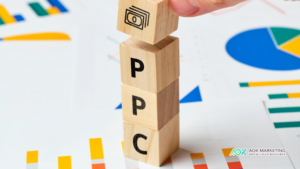As we approach 2025, the digital advertising landscape continues to evolve, bringing with it new challenges and opportunities. Pay-per-click (PPC) and paid media remain integral components of a successful marketing strategy, but with increasing competition and fluctuating market conditions, planning your budget effectively is more crucial than ever. Here are key strategies and tips to help you optimize your PPC and paid media budget for 2025, ensuring you maximize ROI and stay ahead in the game.

1. Understand the Evolving PPC Landscape
The first step in budget planning is understanding the changes in the PPC landscape. As platforms like Google and Facebook continue to update their algorithms and introduce new features, advertisers need to stay informed about the latest trends. For 2025, expect further advancements in AI and machine learning, which will make ad targeting more precise and dynamic. Incorporate these technological advancements into your strategy to ensure your campaigns are as effective as possible.
2. Set Clear Objectives and KPIs
Before setting your budget, clearly define what you want to achieve with your PPC campaigns. Are you looking to increase brand awareness, generate leads, or drive sales? Once your objectives are clear, establish key performance indicators (KPIs) such as click-through rates (CTR), conversion rate, cost per acquisition (CPA), and return on ad spend (ROAS). These metrics will guide your budget allocation and help you measure the success of your campaigns.
3. Embrace a Flexible Budgeting Approach
The digital marketing world is fast-paced and unpredictable. Adopting a flexible budgeting approach allows you to shift funds between campaigns and platforms based on performance and changing market conditions. Allocate a portion of your budget for testing new platforms or strategies, and be prepared to reallocate funds to top-performing campaigns to capitalize on their success.
4. Leverage Historical Data and Predictive Analytics
Use historical data from previous years to inform your budget planning. Analyze which campaigns, keywords, or ad formats delivered the best ROI and consider increasing investment in those areas. Additionally, utilize predictive analytics tools available through platforms like Google Ads and Facebook Ads to forecast future trends and optimize your budget allocation.
5. Focus on Quality Over Quantity
With rising ad costs, it’s more cost-effective to focus on quality rather than quantity. Invest in high-quality ad creatives and well-researched keywords that are likely to attract your target audience. This approach not only improves the effectiveness of your ads but also reduces wasted spend on underperforming assets.
6. Optimize for Mobile and Voice Search
Mobile traffic continues to grow, and with the rise of digital assistants, voice search is becoming increasingly important. Ensure your PPC campaigns are optimized for both mobile and voice search by using mobile-friendly ad formats and incorporating natural language in your keywords and ad copy. This will help you capture this growing segment of the market.
7. Invest in Video Content
Video content has shown remarkable engagement rates and is expected to dominate the digital advertising space in 2025. Platforms like YouTube, Instagram, and TikTok offer robust advertising options for video content. Investing in compelling video ads can significantly boost your visibility and engagement rates.
8. Explore Alternative Advertising Platforms
While Google and Facebook dominate the PPC world, don’t overlook alternative platforms like LinkedIn, Pinterest, or newer platforms that may emerge by 2025. These platforms often offer less competition and lower costs, providing a valuable opportunity to reach specific audiences.
9. Continuously Test and Optimize
The key to successful PPC budgeting is continuous testing and optimization. Regularly test different aspects of your campaigns, from ad copy and images to targeting options and bidding strategies. Use A/B testing to compare performance and make data-driven decisions to refine your approach.
10. Prioritize Retargeting Strategies
Retargeting remains one of the most effective PPC strategies. By targeting users who have already interacted with your brand, you increase the likelihood of conversion. Allocate a significant portion of your budget to retargeting campaigns to maximize the potential of converting prospects into customers.
Conclusion
Effective PPC and paid media budget planning for 2025 requires a combination of strategic foresight, flexibility, and a deep understanding of digital trends. By focusing on quality, leveraging new technologies, and continuously optimizing your campaigns, you can create a robust PPC strategy that delivers strong ROI and helps you achieve your marketing goals in the dynamic digital landscape.
About The Author
Marketing Team
The AOK Marketing Team is a diverse group of amazing individuals driven to help all of our clients succeed. Great people are everywhere, and we believe that people should control their workday, their work environment, and where they live. We have team members in 9 countries: United States, Canada, Egypt, Belgium, Ireland, Australia, India, Pakistan, and Hong Kong.
How can we help you?






